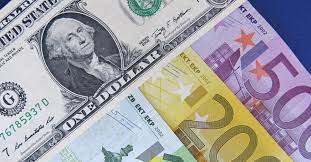In the realm of trading in forex the currency pair EUR/USD is a major player due to its excellent level of liquidity and its influence on international markets.
Traders that want to navigate the market effectively require a thorough understanding of the variables that affect the exchange rate EUR/USD.
In this article we will explore the most important aspects of analysis of the EUR/USD which can assist traders in making well-informed decisions and maximize their potential profits.
Understanding EUR/USD Fundamentals
Economic Indicators
Economic indicators are vital to knowing the forces that affect the exchange rate EUR/USD. A few of the most crucial indicators include:
- Interest Rates. They are set through the European Central Bank (ECB) as well as The US Federal Reserve (Fed) Interest rates directly affect the value of currencies. A higher rate of interest in a particular region generally boosts the currency of that region in comparison to other regions.
- Inflation Rates. Inflation erodes purchasing power, affecting currency values. Central banks strive for steady inflation rates. This can cause policy adjustments that affect the exchange rate.
- Employment Data. Employment statistics, like that of US Non-Farm Payrolls as well as the Eurozone Unemployment Rates, may influence the monetary policy and the value of currencies.
Political Factors
Events that are politically significant, such as elections, policy changes and geopolitical tensions can cause market volatility and affect the exchange rate of EUR/USD. Market participants should be on the lookout for the political climate within both areas.
EUR/USD Technical Analysis
The technical Analysis of EUR/USD can be described as looking at prices of the past charts, patterns on the chart, and other technical indicators to determine EUR/USD’s future direction. Let’s take a look at a few of the aspects that traders must keep track of.
Price Charts
The price chart is used by traders to determine trends and potential entries and outs. The most popular types of charts include:
- Candlestick Charts. The chart displays price movements by with a series of “candles” that show the closing, opening high as well as low price for every trading time.
- Bar Charts. Similar to candlestick charts bar charts depict price fluctuations with vertical bars that display the prices at both ends and horizontal notches that represent the prices at the time of opening and closing.
- Line Charts. Link the prices at closing for each trading session, providing an easy way to visualize the price trend.
Technical Indicators
These indicators employ mathematical computations that are based on volume and price data. Some of the most well-known indicators in the trading of EUR/USD include, but aren’t restricted to:
- Moving Averages are used to calculate the average price for an extended period of time, which helps to spot trends and resistance and support levels.
- Relative Strength Index (RSI) analyzes the speed and changes of price movements, offering insight into overbought or undersold market conditions.
- Bollinger Bands can be described as a volatile indicator that utilizes a moving average as well as standard deviations to form the upper and lower ranges around prices. The bands can aid in identifying possible breakouts and Reversals.
Trading Strategies
A variety of trading strategies are widely employed in EUR/USD trading. Here are some examples:
- Trend trading is the process of the identification and follow-up of the market’s trend. The traders can make use of trendlines and moving averages to establish the trend and make trades in the direction of that trend.
- The concept of range trading is to identify periods of consolidation, and also trading within established levels of support and resistance. The traders can utilize tools such as Bollinger Bands or the RSI to spot the possibility of reversals within the interval.
- Breakout trading is the process of identifying significant prices and trading when prices move above the limits. The trader can make use of tools such as charts and trendlines to identify breakouts that could be possible.
- Carry trading can be a more long-term strategy which takes advantage of the interest rate differentials among those in the Eurozone as well as the United States. The traders who employ this strategy will take a position of longing the currency that has the highest interest rate (earning the interest) and short on the currency that has a lower interest rates (paying an interest). The aim is to make money from the interest rate difference as well as pursuing the possibility of capital appreciation.
- Trading in news involves trading on the EUR/USD currency pair depending on the release of economic information, central bank announcements or geopolitical developments that could affect the price of currencies. The traders monitor the calendar of economic events and are alert to news events that may cause significant volatility. They might enter trades prior to the announcement of news in the event of a high anticipation of the outcome, or quickly react to market reaction once the news has been released.
Risk Management
Every type of trade, such as forex can carry high risk. Therefore, it is essential to devise and follow not just a strong trading strategy, but also a risk management program. Here are some suggestions to keep in mind.
- Stop-Loss Orders. The use of stop-loss order can shield traders from massive losses, by closing the trade when the price changes in the opposite direction to their positions by a certain amount
- Position Sizing. Making the right position size will help traders control the risk they take by restricting amount of capital that is exposed during each trade. The size of a position is based on aspects like the size of the account and risk tolerance as well as what size the stop loss should be.
Conclusion
An extensive EUR/USD analysis is dependent on knowing the technical and fundamental elements that influence price movements.
If you can master these concepts and implementing well-designed strategies for trading and risk management strategies, traders can increase your chances to succeed the market for forex.
Remember that trading is a risk and performance in the past is not a reliable indicator of the future outcomes.
It is vital to do thorough research learn from your experience and speak with an expert in finance prior to making any trade-related decision.















